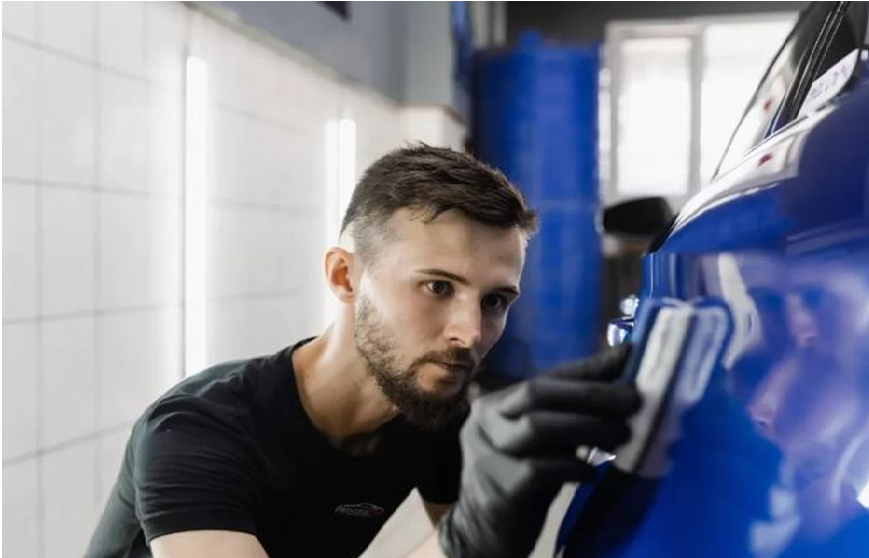
The cars that populate the landscape today were designed, piece by piece, by an automotive designer at his drawing board. A long and rigorous process which we are not always aware of but which Christophe Vloebergh of Mercedes-Benz explains to us.
“We don’t guess the future, we create it. This is the slogan of quite a few designers who are sculpting the streetscape of tomorrow with their designs. Indeed, more than any other, they have a hold on the car in which we drive or the taxi we take. A job with a very wide scope therefore, because the creation of a car is much more than the design of the bodywork: it is the creation of a brand. Mercedes-Benz press officer Christophe Vloebergh gives us an insight into the process of creating a luxury car and the future of car design.
Style Trends: A car consists of an incredible number of elements. Are you designing everything separately, or do all the parts fit right into a big whole?
Vloebergh: There is of course a head designer, Gorden Wagener, who makes sure the project as a whole runs smoothly. He brings the whole team together at the beginning of the creative process and briefs them on the expectations, on what the final result should look like. The different teams then work separately, on the interior of the vehicle, on the bodywork and on the technologies, but all come together regularly so that everyone is on the same wavelength.
How exactly does the design process of a Mercedes take place?
Everything starts again and again with a sketch on paper, this remains the basis. But once that sketch is approved, the design is transferred to the computers, where the project can be refined. After approval of several versions of this nascent project, a model is designed. Everything is then sculpted in clay. Of these miniature versions, we usually make three or four. They are perfected until the team is satisfied with the result. This process also applies to the interior of the car.
If this model is also approved, this model is reproduced in real scale. A two-centimeter layer of clay is spread over a wooden skeleton, and the interior is also reproduced at life size. An exciting step, I personally find, because it’s incredibly meticulous work. The clay is worked with very fine spatulas until the model is precisely faithful.
Since not all of the lines and angles of lighting are visible on this brown clay, the clay is also moistened. The designers then put aluminum foil on the car so that it looks like it’s painted silver gray and the details stand out better.
It depends of course from car to car, but the whole creation process takes months anyway – and even longer for some models. It is important to know that a design freeze is imposed, a deadline for which the project must be ready to go into production. And from there, it takes another two to three years before the car can actually be driven.
To give an example, designers spend a lot of time on the air vents on the dashboard. The clicking noises they make when you turn them to their limit should be precisely correct. We therefore go deep into these details. Also in the design of the seats there is much more than the design of an aesthetically beautiful product. It’s the choice of the right leather, the seams, the location of the air cushions for the massage function. Across the firm, attention to detail is most important in the design department.
What happens after the project is completed?
Engineers and production begin to prepare everything for the actual manufacture of these cars. This lasts about two to three years. For a car model that will arrive on the market in a few years, the design is therefore already finished by now. Laypersons often find this strange, because car designers thereby define the future landscape of our streets. As a car stays on the market on average seven years, this means that between the end of the design process and the last run of the car ten years pass. Designers need to take this into account, so that the model doesn’t look already outdated after all this time. A sacred responsibility.
Have technological developments changed the design process?
They mostly sped it up. With the arrival of software called CAD/CAM (the technology used for the design and assembly of products, editor’s note), it now takes much less time to make adaptations. Thanks to computers, improving a project has become child’s play.
Then there is of course also the recognizable Mercedes logo, which is confirmed on the bonnet. Do you still care a lot about it?
A few years ago, the logo was still present on the bonnet of all our cars, but now we integrate it more often in the front grille. In our rejuvenation exercise, we notice that the logo in the grille grille is much more accepted.
Is the design team mainly behind this rejuvenation exercise or is it still more marketing?
It’s basically design. You can apprehend the market with extremely young marketing, but if your car models don’t match that image, you’re nowhere. But one does not go without the other, of course. »
Do you proceed differently when designing a car in a cheaper price category than when designing a more expensive model?
It goes without saying that a designer knows what is expected of a project when it starts. When designing our top model, the S-Class, other elements are taken into account because we are addressing a different target group. People who choose our most expensive cars, for example, are even more sensitive to finish and detail. But design is design, and it’s always the same people working on the projects.



